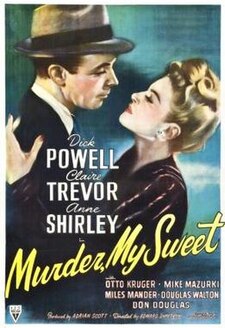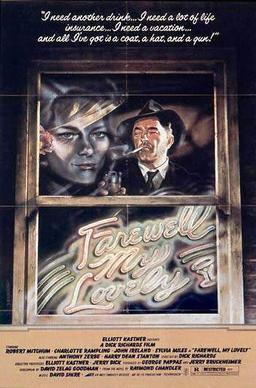With the arrival of Halloween, it seemed an appropriate time to do
a post on at least one ghoulish/magical figure. What better
candidate than the witch? The first Halloween costume I wore was a
witch and, with fitting symmetry, it has been the costume of choice for the past
couple Halloweens (a graduation gown can indeed have multiple uses). What is it
about the Witch that provokes our imaginations? Whether she has been viewed as
an object of fear or of admiration has depended hugely on historical milieu and
cultural context, but her hold has always been tenacious. Fasten your
broomsticks—it’s going to be a bumpy ride.
Moon Riverrun
a site dedicated to movies, books, adaptation, and all the swirling in between.
Monday, October 31, 2016
Tuesday, August 23, 2016
It's a Metaphor, literally! "A la Francaise" and The Fits
| Thank you, Onion. |
Among the most reliable of storytelling devices is the literal metaphor. Such a thing may initially seem to be a contradiction, but when used by a gifted practitioner it can open windows to meaning, and to enjoyment, that would otherwise remain closed.
Literal metaphor is frequently the linchpin of successful literary endeavors. To offer just one famous example: when Joy/Hulga is stuck in the hayloft after her prosthetic leg is stolen in Flannery O'Connor's "Good Country People", her bookish philosophy doesn't have a leg to stand on. I was recently struck by two cinematic efforts that made wonderful use of a central literal metaphor. One is an animated short, the other a feature-length live-action debut.
Sunday, June 5, 2016
Mephistopheles of the Vegetal Kind
For some time I've wanted to do a post devoted to permutations of the Faust legend; this could probably be attributable to political campaign season, when deals with the devil are a dime a dozen. But I was a bit stymied on just how to focus the topic. A simple overview of the various incarnations of Faust was tempting; I could begin on the theatrical/literary front with Marlowe's Dr. Faustus(1592), than move on to Goethe's Faust(1808), then on to Mikhail Bulgakov's The Master and Margarita(written between 1928 and 1940, published in book form in 1967) ; moving to cinema, some space could be given to FW Murnau's 1926 silent version, to Stanley Donen's Bedazzeld(1967), to Istvan Szabo's Academy Award winning Mephisto(1981). A nod could even be given to the The Simpsons: Treehouse of Horror IV, where Homer sells his soul for a doughnut. But the sheer glut of material was overwhelming, and ticking off an assembly line of adaptations has been done before. Was there any particular variation of this story that encapsulated its unique staying power in our culture? Then I had a revelation: One of the most uncannily revealing adaptations of Faust, one that serves as an unexpected yet wholly fitting companion text to Marlowe and Goethe, is the musical Little Shop of Horrors, specifically the 1986 film directed by Frank Oz.
Sunday, February 21, 2016
Not a Valentine's Day Story: Romeo and Juliet and an Apologia for Liebestod
Among singles and many a steady couple, Valentine's Day is much derided as a holiday trumped up by candy and greeting card companies to sell mushy platitudes that were cliche a generation ago, tritely divorced from the realities of actual relationships. I tend to share this suspicion of corporate co-opting of Eros for narrow mercantile purposes. However, I've noticed that this is a similar verdict foisted upon one a literary work that I love, Shakespeare's Romeo and Juliet. Shakespeare's play occupies a strange double-edged sword place in our culture: it is universally recognizable, while simultaneously misunderstood, if not unappreciated. The truth is Shakespeare's story and safe, dismissively sappy Hallmark card sentiments couldn't be more diametrically opposed.
| Illustrations for Romeo and Juliet, by Salvador Dali |
Monday, February 8, 2016
The Dated and the Delightful: Hitchcock's Spellbound
Timelessness is held aloft as a standard by which we recognize a masterpiece. Ben Jonson wrote of Shakespeare ,"He was not of an age, but for all time", and while Jonson's eulogy may be slightly tongue-in-cheek, the observation has turned out to be a dead-on appraisal. Conversely, when a piece of work is described as "dated", it's not complimentary. Being "of an age" translates into "not aging well", and this is not a good sign for a book, play, musical composition, or film. But I found myself wondering, what does make something age well? Is it possible to be dated yet still be successful aesthetically? For a test case, I've chosen one of my favorite films from Alfred Hitchcock: Spellbound(1945).
Saturday, January 23, 2016
Blast from the Past(twice over?): Farewell My Lovely
 |
| The 1944 film noir |
 |
| The same story, circa 1975 |
Tuesday, December 15, 2015
Here Be Dragons
Ever since I was a small child, dragons have had an indelible hold on me. I went through a protracted phase were I was a dragon myself, covered in scales, able to fly, able to breathe fire and incinerate anyone who tried to make me do whatever I didn't want to do. And why wouldn't five-year-old-me want to become a dragon? Of all the inhabitants of the fantasy bestiary, the dragon has a uniquely entrenched position in the human imagination. Every mythological tradition in the world has some variant of the dragon within it. The perspective on the dragon varies from culture to to culture, but the dragon has continually endured, whether as a fearsome monster or a benevolent omen of good fortune. Indeed, as twentieth century fiction has evidenced, these two poles curiously begin to melt into one another.
Subscribe to:
Comments (Atom)

